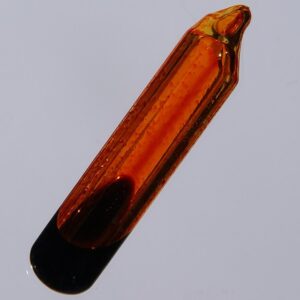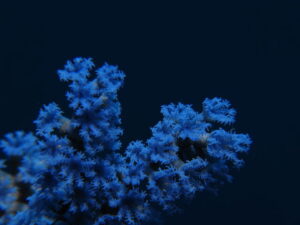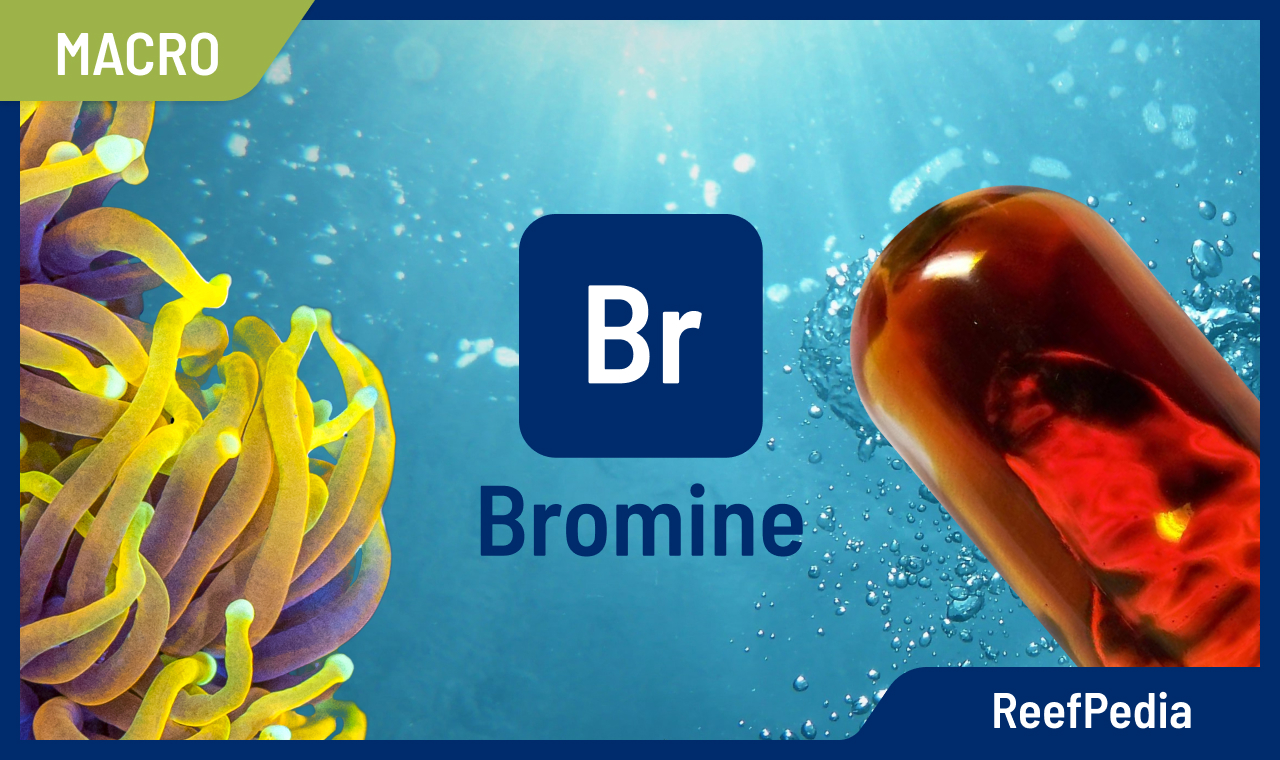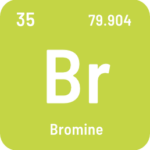 What is BROMINE (Br)?
What is BROMINE (Br)?
Bromine (Br, Latin: bromium) is a chemical element from group 17 of the periodic table of elements, the so-called halogens*. In nature, it does not occur in the free state, but its various compounds are known, e.g. sodium bromide (NaBr), hydrobromic acid (HBr), potassium bromide (KBr), etc. It is one of the elements that are not very widespread in the Earth’s crust and can be extracted in the form of the minerals bromocarnalite, bromosylvinite and also bromoargyrite.
Bromine is a non-metal and is the only one of this group of elements that occurs under normal conditions as a volatile liquid (brownish red). Like other halogens, it is highly reactive, forming chemical compounds in which it occurs in different oxidation levels (-I, I, III, V, VII). It is less reactive than chlorine but more reactive than iodine, and is therefore able to oxidise iodides (I–) to free iodine (I2). Corals and biofilms can absorb both iodide and free iodine, so it does not matter in which form it is supplied to them.
The highest, although still relatively low, concentrations of bromine are found in saline waters, its content in seawater averaging 50 ppm (50 mg/L). Bromine is one of the macronutrients in seawater. The ratio of bromine ions to chloride ions should be constant at 0.003473. Bromine, like other elements, is related to the salinity of seawater.
The importance of bromine in seawater

Bromine is included in the group of macronutrients found in seawater, despite being relatively scarce. It is often underestimated and has a significant impact on marine organisms.
It is an element that corals require for the construction of their skeleton (building function). In turn, zooxanthellae use it in the production of enzymes used during photosynthesis (biological function). The bromine content of seawater is also not insignificant for coral colouration.
The roles of bromine
Biological processes (coral skeletal growth)
First and foremost, hard corals need bromine in the process of building their skeletal structure.
Among other things, bromine is a component of a protein (horn scleroprotein) that is used by corals to stabilise the skeleton. The horn scleroprotein is a water-soluble protein and has a fibrous structure, this has an impact on the structure of the coral skeleton.
Nutritional function
Some soft corals accumulate bromine in their tissues to produce toxins for later use when fishing for plankton.
 Coral colouration
Coral colouration
Bromine has a decidedly similar effect to fluoride, brightening coral tissue and providing nice colouration even at low light intensities.
Some species of soft corals, as well as algae, accumulate bromine in their tissues. This element affects the glow and fluorescence effect (blue, purple) in corals. One example is the coral Cespitularia, which has a beautiful blue fluorescence when bromine levels are correct.
Biological processes (enzymatic processes)
Zooxanthellae use bromine to produce enzymes that are indispensable in photosynthesis.
Protection against parasites
Bromine also combines with other elements to act as a defence against parasites and to inhibit the growth of bacteria and algae.
Problems associated with an excess or deficiency of bromine in seawater
Generally, bromine consumption is low, even with a higher coral stocking rate, although it is recommended to replenish it systematically, preferably daily. The recommended amount is 0.7-1.2 mg of bromine per 100 L of reef tank.
A low concentration of bromine reduces colour brilliance and inhibits skeletal growth in corals. Animals may become more sensitive to parasites and start shedding zooxanthellae. Low bromine concentrations also affect weaker polyps in corals.
Excessively high bromine values (above 90 mg/l) can lead to animal health problems, and tissue detachment may occur, visible from the middle part of the tissue.
How to protect an aquarium?
Check the bromine content regularly and keep it at the correct level. We recommend that you keep the bromine at a level of 60 – 70 mg/L, the optimum value we recommend is 65 mg/L. This level of bromine in seawater ensures healthy and beautiful colouration for the animals.
The most accurate and reliable method for determining bromine is ICP-OES analysis. The Inductively Coupled Plasma Optical Emission Spectrometry (ICP-OES) technique is the most accurate analytical method for analysing the elemental composition of seawater.
Indicators of abnormal bromine levels in the marine aquarium:
Some coral species are very sensitive to both deficiencies and overdoses of bromine in seawater. Species such as Cespitularia, Xenie and gorgonians are good examples. In general, changes can be observed from corals indicating abnormal bromine levels in the reef tank.
Deficiency:
- pale colours of corals
- poor coral growth
- appearance of parasites
- damage to the skeleton
Excess:
- Tissue dehiscence
Recommendations
In order to ensure the correct level of bromine in the aquarium you should test it regularly and ensure that the level is correct.
If the bromine level is above 70 µg/l, we speak of an overdose. The most common reasons for exceeding the recommended bromine level: improperly prepared salt, contaminated supplements, too high doses of administered liquids. Find and eliminate the cause of the problem and lower the value of this parameter in the water. Perform up to 6 water changes. It is recommended to change about 15% of the aquarium water volume during each water change until the recommended value of this parameter is reached. The water prepared for the change must have the correct target salinity level. Use salts with the correct parameters and composition suitable for the ICP test.
In case of an overdose or suspected presence of organic bromine compounds in too high a concentration, they can be removed from the water using activated carbon and other adsorbers.
If bromine levels are below 60 mg/l, we recommend using bromine-containing products to compensate. In order to ensure constant iodine levels in marine aquaria, we recommend systematic supplementation of this element depending on the coral population in your aquarium.
*The name fluoride is derived from the name of the first element placed at the top of the seventeenth column of the periodic table (F-fluorine).
About author

Magdalena Metzler
Privately, I am a mother and a lover of nature and sport. My main interest is quantum chemistry, which hides a whole lot of unsolved mysteries and connections, which is extremely exciting from a scientific point of view.
In my scientific career, I have conducted international projects focused on innovative solutions for many branches of business, e.g. automotive, construction, and now, of course, marine aquaristics.
Working at Reef Factory gave me a passion for marine aquaristics, which I can develop every day, building a chemistry department and creating products that will help aquarists take care of tanks and ensure the highest safety of animals.
One of the most exciting memories of working at Reef Factory is the commissioning of the ICP-OES spectrometer, which analyzes the elemental composition of seawater. The method of analysis in ICP is based on an analytical technique, which is a combination of my passion for quantum chemistry and marine aquaristics.
I hope you find my articles on ReefPedia interesting and helpful! Happy reading :))
Magda


 What is BROMINE (Br)?
What is BROMINE (Br)?